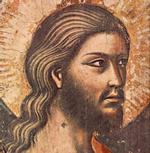Make your gift today!
Help keep Catholics around the world educated and informed.
Already donated? Log in to stop seeing these donation pop-ups.
Catechism of the Catholic Church
56 After the unity of the human race was shattered by sin God at once sought to save humanity part by part. The covenant with Noah after the flood gives expression to the principle of the divine economy toward the "nations", in other words, towards men grouped "in their lands, each with [its] own language, by their families, in their nations". 9
57 This state of division into many nations is at once cosmic, social and religious. It is intended to limit the pride of fallen humanity 10 united only in its perverse ambition to forge its own unity as at Babel. 11 But, because of sin, both polytheism and the idolatry of the nation and of its rulers constantly threaten this provisional economy with the perversion of paganism. 12
58 The covenant with Noah remains in force during the times of the Gentiles, until the universal proclamation of the Gospel. 13 The Bible venerates several great figures among the Gentiles: Abel the just, the king-priest Melchisedek - a figure of Christ - and the upright "Noah, Daniel, and Job". 14 Scripture thus expresses the heights of sanctity that can be reached by those who live according to the covenant of Noah, waiting for Christ to "gather into one the children of God who are scattered abroad". 15
Notes:
English Translation of the Cathechism of the Catholic Church for the United States of America © 1997, United States Catholic Conference, Inc.






